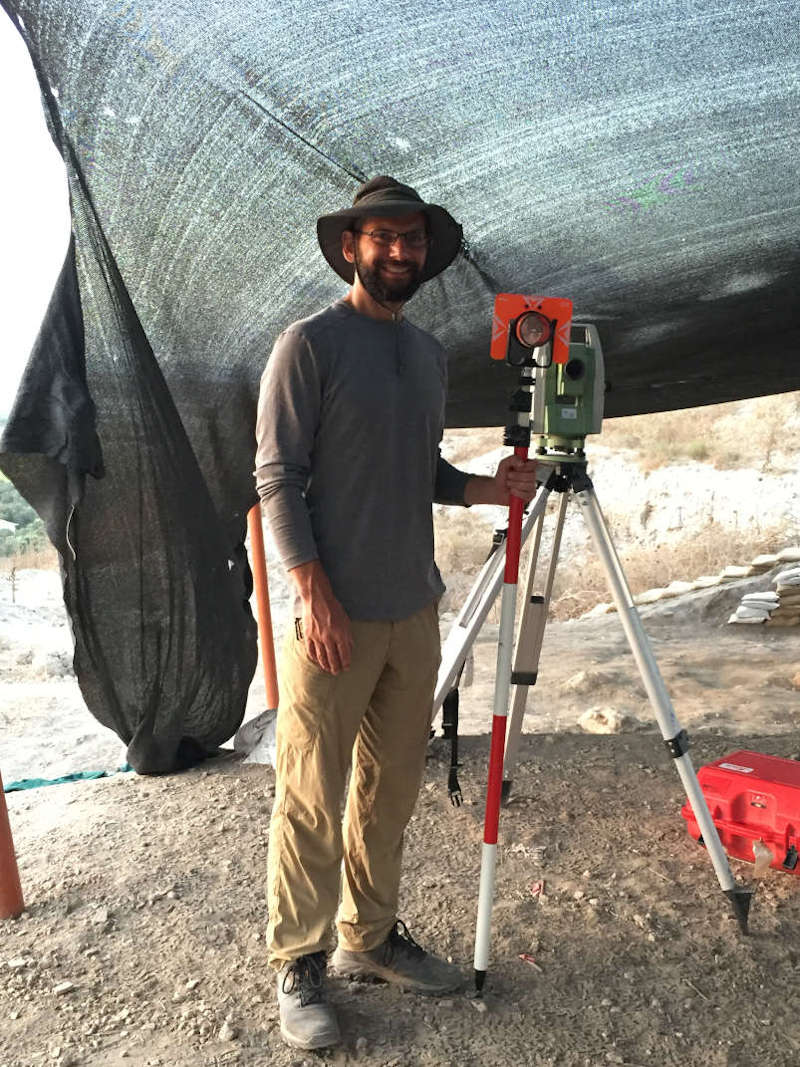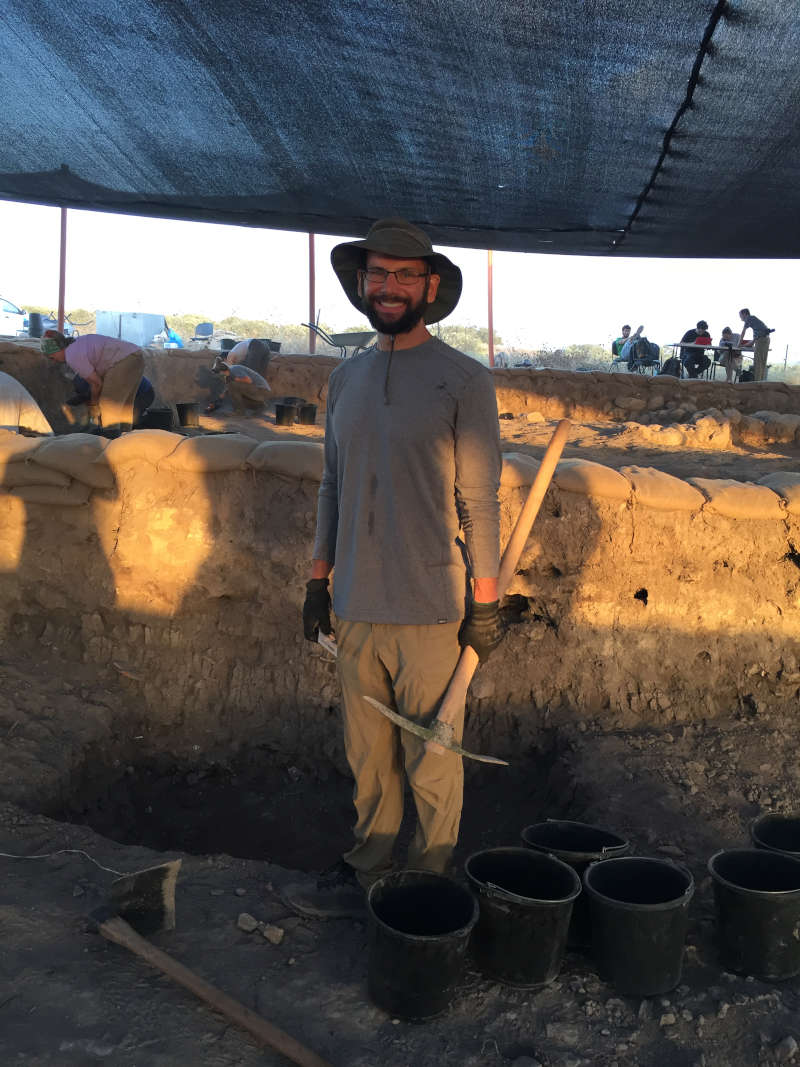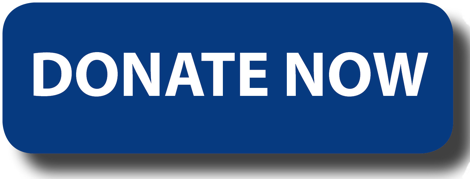
2018 WILLIAM G. DEVER FELLOWSHIP FOR BIBLICAL SCHOLARS FIELD REPORT: HEATH DEWRELL
For four weeks, just moments before sunrise, I’d file off the bus, march up the tel, and take my position next to one of the poles by my square. Once everyone was in position, we would all raise the poles in unison spreading the shade cloth over the site that would keep us cool enough to work despite the hot Israeli summer sun. Most of the volunteers would then take their places in their assigned areas and begin excavating, carefully scraping away layer after layer of earth and uncovering the material remains of Persian period and late Iron Age Tell Keisan, a Phoenician site a bit inland from Akko. While I did have the opportunity to get my trowel dirty, most mornings I continued to set up while others scraped away. I was serving as assistant square supervisor, which meant that I got to do a lot of the organizational work for our square. After the shade cloth was up, I would set up and calibrate the total station, which we used to record the coordinates of the finds as we excavated. Then I would set up our square’s laptop and printer, which we used in the field to print tags for pottery buckets and labels for small finds, bones, soil samples, etc. As finds came out of the ground, I was responsible for recording their locations, tagging them, and uploading the information into the computer right there on the tel.


Then, in the afternoon, in addition to the normal work of washing pottery, I worked with my square supervisor to write up the report for the day. This was by far the most educational aspects of my time at Keisan. I got to see the work of interpreting our finds done in real time, and by the time that I was a week in, I was even contributing to the conversation. We would discuss how various installation were related to another stratigraphically. I got to work through the problem of pits from later periods cutting through architecture from an earlier period, resulting in the unusual circumstance of later material below earlier material. It was a puzzle to be solved in real time, with each day offering a few more pieces of data as we tried to reconstruct the history of our portion of the site. Having participated in both the work of excavation and interpretation in real time, I’ll never read a site report the same again.
Then, for four weeks more weeks, I woke up bright and early at the Albright Institute in Jerusalem and decide where my workspace would be for the day. Most days, after a quick breakfast in the dining room, I’d pack my laptop into my satchel and head out either to the Albright’s library or to the library at the École Biblique just around the corner, although on especially pleasant days the balcony outside my apartment served as a lovely makeshift office. Together, these two libraries provided me with all the tools that I needed to make substantial progress on my second monograph. The most enjoyable part of my stay at the Albright was afternoon tea, where I typically enjoyed a strong cup of Israeli coffee and talked with scholars doing archaeological work all over Israel from the Neolithic to the Roman periods. Week by week my conversation partners changed as people left the Albright and new people arrived to take their places. The opportunity to speak so many scholars working in such a variety of specialties and subspecialties was among the most valuable aspects of my time in Israel.
Neither the hands-on experience at Tell Keisan nor the cross-disciplinary dialogue that the Albright provided would have been possible without the William G. Dever Fellowship for Biblical Scholars. Understanding the work of both excavation and interpretation that goes into archaeological fieldwork deepens my ability to incorporate archaeological evidence into my own work. I thank the William G. Dever Fellowships for Biblical Scholars for this incredible opportunity, as well as Elizabeth Bloch-Smith, who brought the fellowship to my attention in the first place and who serves as field director at Tell Keisan. She and my square supervisor, Leann Pace, were generous and patient teachers from whom I learned an enormous amount in four short weeks. I also thank Keisan’s co-directors David Schloen and Gunnar Lehmann, for allowing me to participate in the excavation, as well as and especially the generous donors who make the fellowship and all the good work that it makes possible.
Want to help more students and early career archaeologists get into the field? Donate to the cause today by selecting “Excavation Scholarships” as your gift purpose!
If you want your gift to count towards the Steinmetz challenge, please send us an email after you make a gift.
